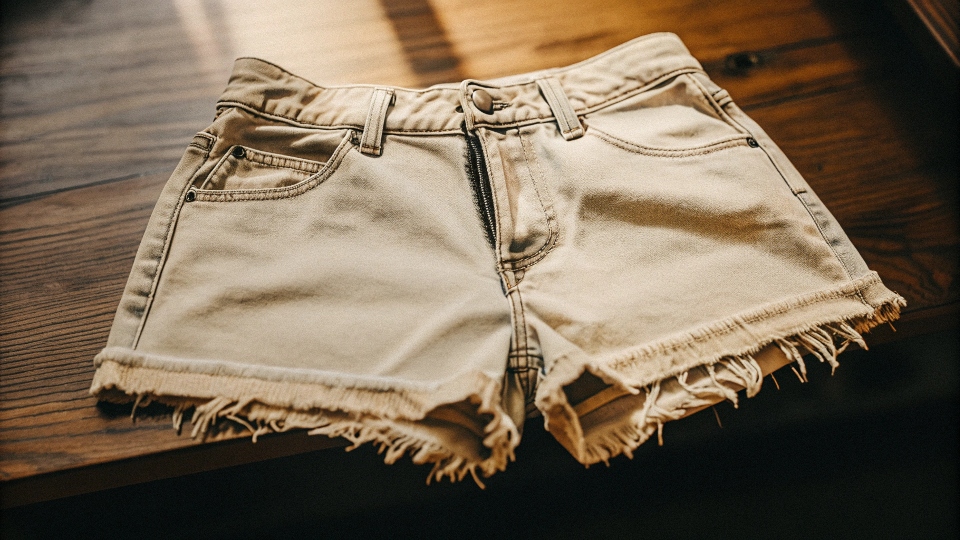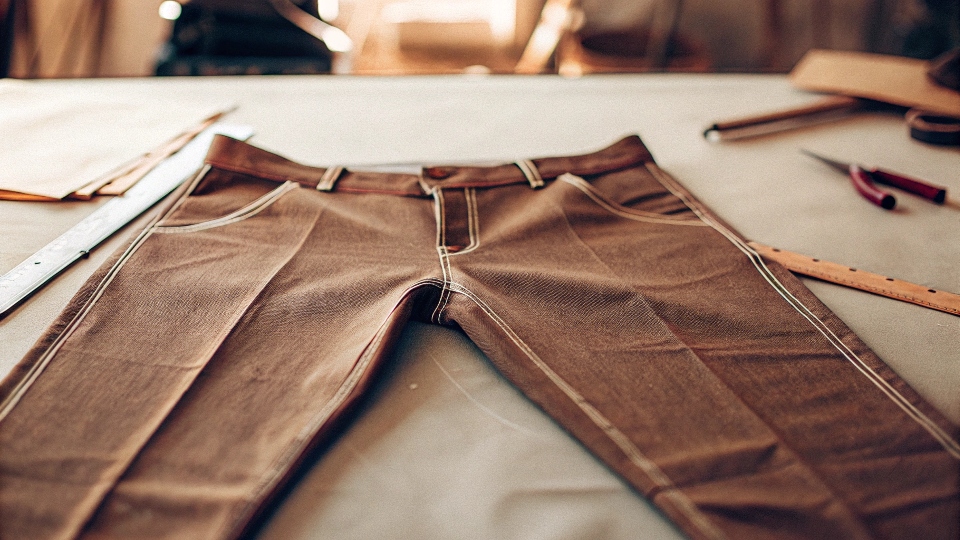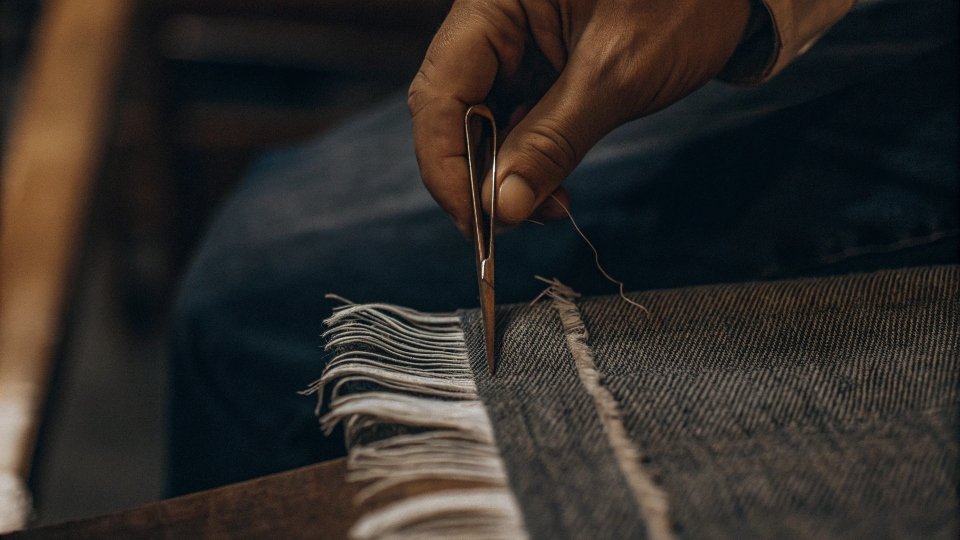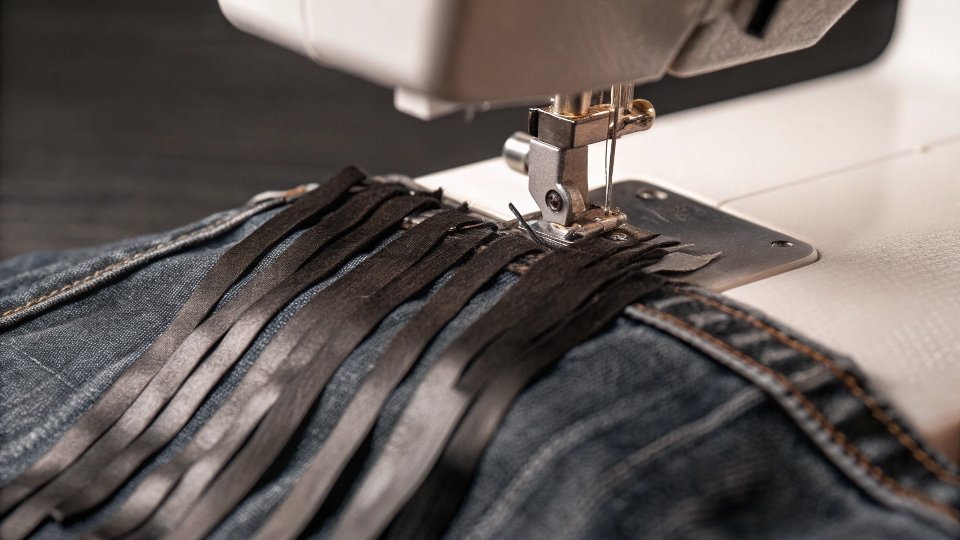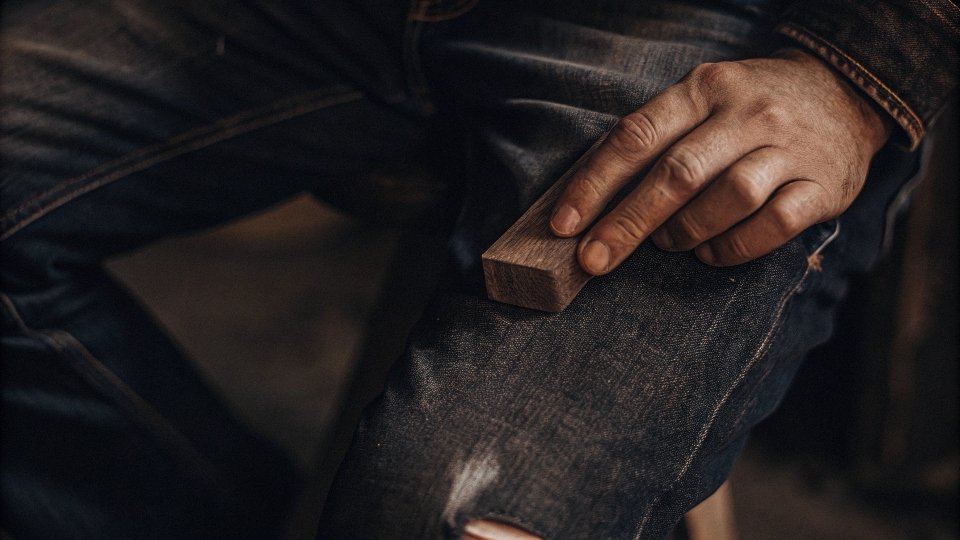You have a pair of old jeans collecting dust, but buying brand new frayed shorts1 feels wasteful. The thought of cutting them yourself is scary because one wrong snip could ruin them completely.
Mark your shorts one inch longer than you want them, cut them, and then create the fringe by washing and drying them. For a faster method, use a wire brush or tweezers to pull out the horizontal white threads from the cut edge.
At my factory, DiZNEW, creating the perfect frayed hem is a science. We call it "controlled destruction2." My designer partner, Dean, often specs the exact length and look of the fringe he wants for his clients.
He knows that the best fringe looks natural, not like a clumsy scissor job. While we use industrial tumblers and laser guides to achieve this effect at scale, the core principle is something you can easily replicate at home.
The secret is to understand that you aren't just cutting the fabric; you are releasing the threads that are already there.
How to cut jeans into shorts with fringe?
You're standing with a pair of jeans and scissors, but you're too nervous to make the cut. You know that cutting them crooked or too short will turn your cool project into a mess.
Put the jeans on and use chalk to mark your ideal length on the front. Take them off, lay them flat, and use a ruler to draw a straight line about an inch or two below your mark. This extra length will become your fringe.
Getting the cut right is the most critical step. In the factory, precision is everything. At home, you can achieve this with careful preparation. First, always try the jeans on to mark them. A jean's length changes when you wear it.
Mark a spot on your outer thigh that feels right. Then, take them off and lay them perfectly flat. Use a ruler to draw your cutting line3. A great pro tip is to make the line slightly angled, so the inseam is a little longer than the outer seam.
This provides better coverage and a more flattering look. Once you're confident in your line, use sharp fabric shears4 for a clean cut.Kitchen scissors will crush the fibers and make fraying harder.
Remember, always cut longer than you think you need. You can always make them shorter, but you can't add fabric back on.
How to create fringe jeans?
You've successfully cut your jeans into shorts, but the bottom edge is just a clean, hard line. It looks unfinished and homemade, not like the soft, stylish fringe you wanted.
The easiest method is to throw the new shorts in the washing machine and dryer5. The combination of tumbling, water, and heat will naturally agitate the cut edge and release the threads into a perfect, soft fringe.
Denim is a fabric made of vertical blue threads (the warp) and horizontal white threads (the weft) woven together. Creating fringe is simply the process of removing some of those horizontal white threads.
This leaves the vertical blue threads to hang loose. We have a few ways to achieve this, from simple to more controlled.
Methods for Creating Fringe
| Method | How It Works | Best For |
|---|---|---|
| Washer & Dryer | The tumbling action and heat break down the weave and separate the threads for you. | An easy, all-over soft and natural fringe. |
| Tweezers or Seam Ripper | You manually pick out each horizontal white thread, one by one. | Creating a very long, precise, and clean fringe. |
| Wire Brush | Brushing the cut edge vigorously breaks and pulls out the white weft threads quickly. | A faster manual method for a distressed, messy fringe. |
The insight you had about smacking the jeans is really just a manual version of the washing machine method. The friction caused by hitting the fabric helps break those white threads loose.
For the most authentic look, wash them first, then use tweezers to pull a few extra threads for a longer, more custom fringe.
How to attach fringe to denim?
Natural fraying isn't enough for your design. You envision a bold, heavy fringe—maybe suede or chain—but you're not sure how to attach it without it looking cheap or falling off.
For a strong, no-sew bond, use a dedicated fabric adhesive6. Apply a thin line of glue, then firmly press the fringe trim onto the denim. For the most durable and professional result, use a sewing machine.
This is a different skill from creating a frayed hem. This is about adding a separate element to the garment. Dean sometimes sends me designs that incorporate leather or chain fringe for a specific look. In the factory, we almost always sew it for maximum durability.
At home, you have options. Sewing is the best choice if you have a machine. Use a heavy-duty needle designed for denim and a quality polyester thread. The best way to do it is to hide the tape edge of the fringe inside a seam. For instance, you could open the side seam of your shorts, insert the fringe, and stitch the seam closed again.
This gives a clean, professional finish. If you don't have a sewing machine, a high-quality fabric glue is a great alternative. Don't use a hot glue gun or white craft glue; they won't hold up in the wash. Look for a brand specifically for permanent fabric bonding.
How to fray jean shorts with sandpaper?
Your new shorts have a nice fringe, but the rest of the fabric looks too dark and new. You want to create that authentic, vintage character with soft, worn patches.
Wrap a piece of medium-grit sandpaper around a small block of wood and rub it on the areas you want to age. Use firm, even strokes on the thighs, pocket edges, and seams to gently wear away the fabric surface.
This technique beautifully mimics years of natural wear. In our wash house, we use industrial sanders and grinders to create these effects, but a simple piece of sandpaper does the exact same thing on a smaller scale. Start with a medium grit, around 100 to 150.
Before you start sanding, put a magazine or a thick piece of cardboard inside the leg. This prevents you from accidentally sanding through to the other side. Think about where jeans naturally fade and wear out: the front of the thighs, the seat, the edges of the back pockets, and along the seams.
Gently rub the sandpaper over these areas. Check your progress often. It’s easy to overdo it and create a hole when you just wanted a fade. For a softer look, you can come back with a fine-grit sandpaper at the end.
This process will break down the stiff surface of the denim, making it feel softer and look like you’ve owned the shorts for years.
Conclusion
Making your own fringe jean shorts is a simple process of cutting, fraying the hem by agitating the fibers, and adding personal touches with sandpaper for a perfectly worn-in look.
-
Explore expert tips on transforming old jeans into stylish frayed shorts, saving money and reducing waste. ↩
-
Learn about the concept of controlled destruction in fashion, a technique that enhances the aesthetic of denim. ↩
-
Discover the best methods for marking cutting lines on jeans to ensure a perfect fit and style. ↩
-
Understand the significance of using sharp fabric shears for clean cuts in denim projects. ↩
-
Find out how the washing machine and dryer can help you achieve a perfect fringe on your denim. ↩
-
Discover the best fabric adhesives for securely attaching fringe to your denim projects. ↩

